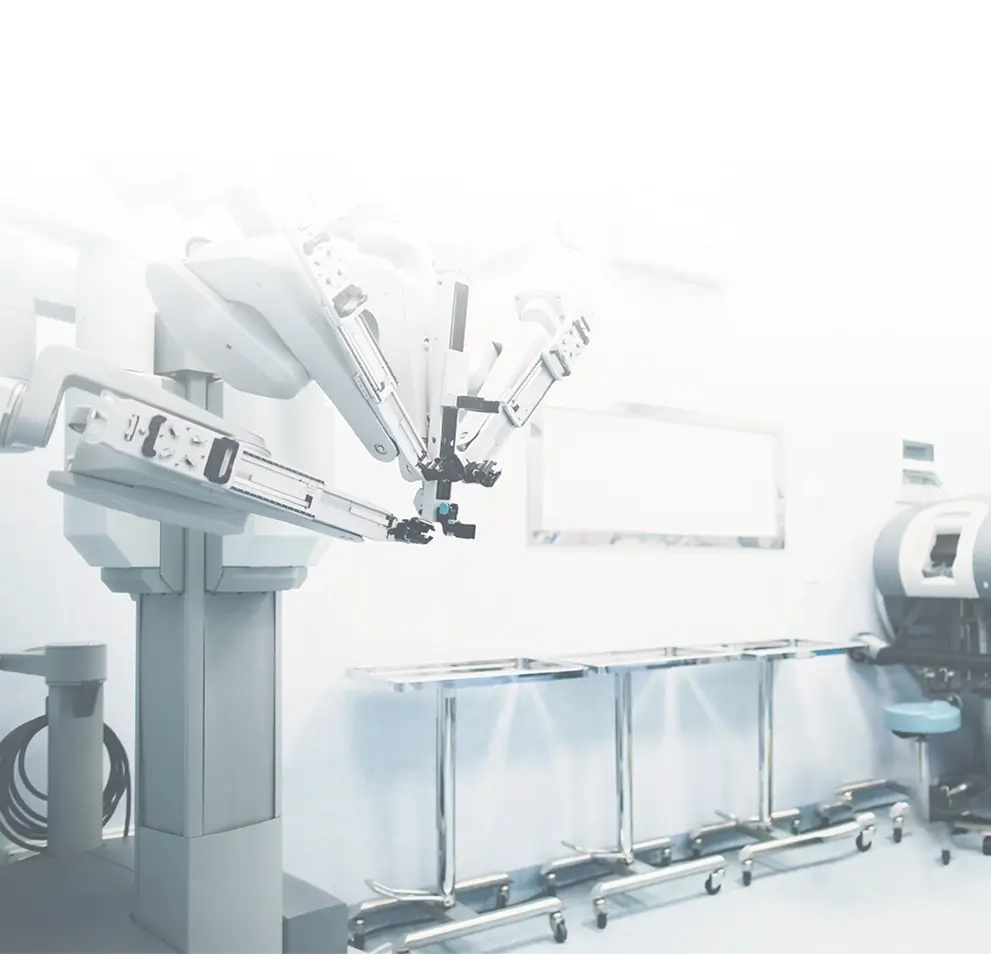OVERVIEW
The da Vinci Robotic Surgery System is an advanced surgical platform that helps surgeons perform complex surgical procedures with superior precision, enhanced flexibility, and better control. This surgical system comes with robotic arms that support a higher degree of dexterity, which in turn helps surgeons access hard-to-reach areas in the body and perform surgeries seamlessly.
These robotic arms function with the unique and intuitive EndoWrist technology, which facilitates intricate movements of the arms in the surgical site. These robotic arms are controlled by surgeons through a special console.
One of the robotic arms carries a camera that supports 3D imaging of the surgical site, and the surgeon moves the arms based on information received from the highly detailed, magnified images.
da Vinci Robotic Surgery System uses tiny incisions instead of larger incisions; this translates to numerous advantages like reduced blood loss, less pain and scarring, fewer treatment-related complications, etc.
Advantages of da Vinci Robotic Surgery System
The da Vinci Robotic Surgery System comes with numerous advantages for patients:
As a minimally invasive procedure, the da Vinci Robotic Surgery System supports faster recovery among patients.
Lesser blood loss and fewer treatment-related complications
As this procedure can be performed through smaller incisions, it leads to less scarring.
The da Vinci Robotic Surgery System also reduces the risk of wound infections.
The 3D imaging guidance and precision help reduce the damage to the surrounding healthy tissues.
The da Vinci Robotic Surgery System supports overall positive clinical outcomes with better survival rates.
The surgeon’s dexterity is remarkably upgraded, which in turn helps surgeons reach complicated regions and operate the tumor with better precision.
